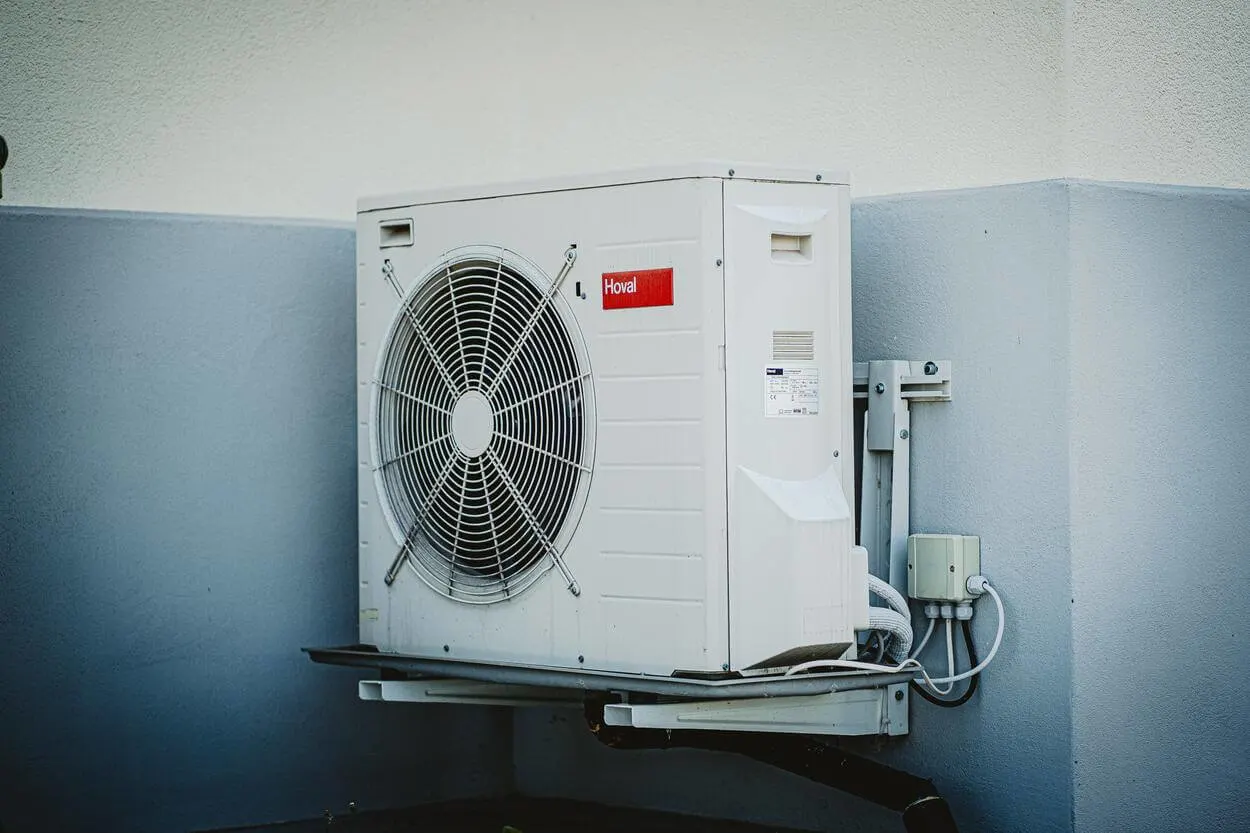S.E.E.R is short for “seasonal energy efficiency ratio”. This is the rating air conditioning units use to convey their usage cost. Seer ratings help measure not only the air conditioning but also the heat-pumping cooling efficiencies.
There are many different seer ratings. Namely, 14 Seer and 13 Seer, whose differences lie in their efficiency.
If you’re curious about the differences between these ratings, you’ve come to the right place. In this article, I’ll explain the differences between a 14-seer and a 13-seer rating in an air conditioning unit.
So let’s get right to it!
Is there a difference between 14 SEER vs 13 SEER?
There are many different seer ratings in an air conditioning unit. The main difference between a 14 SEER and a 13 SEER is their energy efficiency. The air conditioning systems with 13 SEER are less energy-efficient than their 14 seer counterpart.
A seasonal energy efficiency ratio is a system that allows a person to determine the energy efficiency of an air conditioner. The seer ratio is calculated by dividing summer energy used by summer by summer cooling output.
The 14 SEER air conditioning models are in higher demand than the 13 SEER models because of their higher efficiency. This seer rating provides better energy efficiency than AC models with 9, 8, or 13 seer ratings.
Well, there’s a reason behind 14 SEER being more energy-efficient. This is because the higher the seer is in general, the less electricity an air conditioner would consume to be able to run. This makes it more energy-efficient and a good option for people.
Moreover, there’s a notable difference in terms of sizes as well. A 14 SEER system is about 10 to 25 percent larger and heavier. Whereas a 13 SEER air conditioning system is lighter and smaller in weight.
However, installing a 14-seer unit might be more complex than installing a 13-seer unit.
Here’s a table differentiating between 13 SEER and 14 SEER:
| Categories | 13 SEER | 14 SEER |
| Efficiency | Less efficient than 14 SEER. 28-30% more efficient than other seers. | More efficient than 13 and previous seers. |
| Electricity Consumption | Consumes fairly less electricity overall. | It Consumes even less energy than a 13 SEER. |
| Power Usage | Requires more power than a 14 SEER. | 7.2 percent less power to run. |
| Running Time | Lifespan of 7 to 8 years. | Lifespan of 10 to 15 years. |
Is 14 SEER good enough?
14 Seer is more than good enough! Going from a 13 to 14 Seer unit saves you about 7.2 percent in power costs. It’s believed that anything over 13 is great.
This is because replacing your old seer system with a higher-rated seer unit could significantly reduce the cost of cooling your home.
14 Seer units are incredibly energy efficient. They’re about 20 to 30 percent more efficient than air conditioning systems from 15 years ago. Currently, the national minimum seer rating requirement is 13.
The 14 Seer AC models are single-stage compressors. Many countries have made installing air conditioning units with a 14 Seer rating mandatory. This would maintain greater efficiency and also help protect the environment.
Furthermore, the 14 Seer is the most common type of air conditioning system. The outer unit includes the condenser coils and compressor. Whereas the inner unit includes the fan and evaporating coils.
These air conditioning models with 14 Seer are mainly installed in business offices and houses. A 14-seer unit is about 15 to 30 percent more energy efficient than an average HV AC unit used years ago.
The shift from 13 SEER to 14 SEER will eventually prove to be a great one. It’ll also be more convenient for our environment as it’s more efficient.
Is it worth paying for a higher SEER?
As you know, the higher the seer rating, the more efficient an AC unit will run. This would greatly reduce the cost of energy bills. This is why it’s worth paying for a higher seer.
For instance, a 20 SEER AC unit will be twice as efficient as a 10 SEER unit. It won’t need much energy or power to run, so it’ll lower the electricity bill.
So, you may think of this as an initial investment for a greater outcome. You’ll save so much by paying more once for a higher seer unit.
Although buying the highest seer-rated air conditioner for your home isn’t necessary. However, it should be noted that the lower seer models can cost you excessive energy bills. Even if they’re cheaper, you’ll pay way more energy costs!
Not only that, but a higher seer rating is also generally better for the environment. The switch from 13 Seer to 14 Seer becoming mandatory for some countries has done well.
Advantages of Higher Efficiency Systems
By consuming less energy, you’re technically lowering the carbon footprint. It’s also putting less strain on the environment.
A higher seer rating is much more efficient than a lower one. In short, the more efficient your cooling system is, the less energy it’ll consume to cool your place.
Here’s a list summarizing a few benefits of a higher-efficiency system:
- Lower utility bills
They use less energy, so you’ll spend less on bills. - Incentives and manufacturer’s rebates
While they can be expensive, many government incentives or rebates can help you get a good price. - Environmental Impact
As they use less energy, they contribute to fewer greenhouse gas emissions. Less electricity also helps minimize the use of fossil fuels. - Humidity
Not only do they maintain a preferred air temperature, but they also effectively remove moisture from the air.
Take a look at this video explaining seer ratings:
Are 13 SEER air conditioners being phased out?
If your AC has a seer lower than 14, you need to replace it with a greater seer rating immediately. 13 Seer was the national minimum seer rating for an air conditioning unit. But not anymore!
In the United States, you can no longer install an air conditioner with a seer rating of 13 or less. The new federal regulation has made it compulsory that all new ACs being installed should have a seer rating of at least 14 or higher.
However, if you’re in the north region, you can continue to install 13 Seer AC systems. This is specified by the Department of Energy (DOE). There’s no specific date yet for phasing out these units.
If you want to buy an air conditioner for your home, a unit with a seer rating between 15 and 18 might be a good choice. This would balance out your spending cost for the unit and the amount you save on utility costs.
Although 15 to 16 seer ratings are typically recommended, the best systems for you depend on your specific needs. All air conditioners help cool your home to set a temperature regardless of their seer rating. So, you should know which one’s the best for you!
What is the difference between 14 SEER and 16 SEER?
The main difference is that 16 Seer is more efficient than a 14 Seer AC unit. 14 Seer, however, is the new standard or base level.
Although 16 Seer might be more efficient, this increased efficiency comes at a cost. It would cost around 10 to 15 percent more.
However, after continued use, you’ll be able to save way more in energy costs. Lower electricity bills will make your purchase so much worth it!
16 seer and 14 Seer are very similar. Therefore, it can be quite confusing which one would be more suitable. From a price point of view, a 14 Seer AC is more affordable than a 16 Seer unit.
However, a 16-seer unit is much more energy-efficient than a 14-seer one.
A 16-seer unit uses exactly 13 percent less energy to produce the same amount of cooling as a 14-seer unit. For every 100 dollars you spend to cool your home with a 14 Seer unit, you can save 13 dollars in bills by upgrading to a 16 Seer AC unit.
So, the choice is yours! If you want something pocket-friendly, go for the 14 Seer one. It was a couple of hundred dollars cheaper.
But, if you can invest in a 16-Seer one, you’ll be able to save more on electricity bills in the future. 16 seer would provide you with long-term savings, and it makes more sense to buy it.

Final Thoughts
- SEER (Seasonal Energy Efficiency Ratio) ratings determine the energy efficiency of air conditioning units. These ratings impact their running costs.
- The main distinction lies in energy efficiency. A 14 SEER unit is more efficient than a 13 SEER unit, consuming less electricity.
- SEER is calculated by dividing energy used during summer by cooling output. It provides a clear efficiency metric.
- A 14 SEER unit is larger and heavier than a 13 SEER unit, and its installation can be more complex.
- Upgrading to a 14 SEER unit can save about 7.2% on power costs. It is considered more than sufficient for efficient cooling.
- In the U.S., new federal regulations mandate a minimum SEER rating of 14 for air conditioners. In contrast, some northern regions may still install 13 SEER units.
- Higher SEER units, like 16 SEER, offer increased efficiency. It also helps in savings in the long run despite higher initial costs.
- Higher SEER ratings contribute to reduced energy consumption and lower electricity bills. It also helps lower greenhouse gas emissions. It benefits homeowners and the environment.
Other Articles:
WHAT ARE THE DIFFERENCES BETWEEN BUDGET AND AVIS?
DIFFERENCE BETWEEN CASH BALANCE AND BUYING POWER (IN WEBULL)

